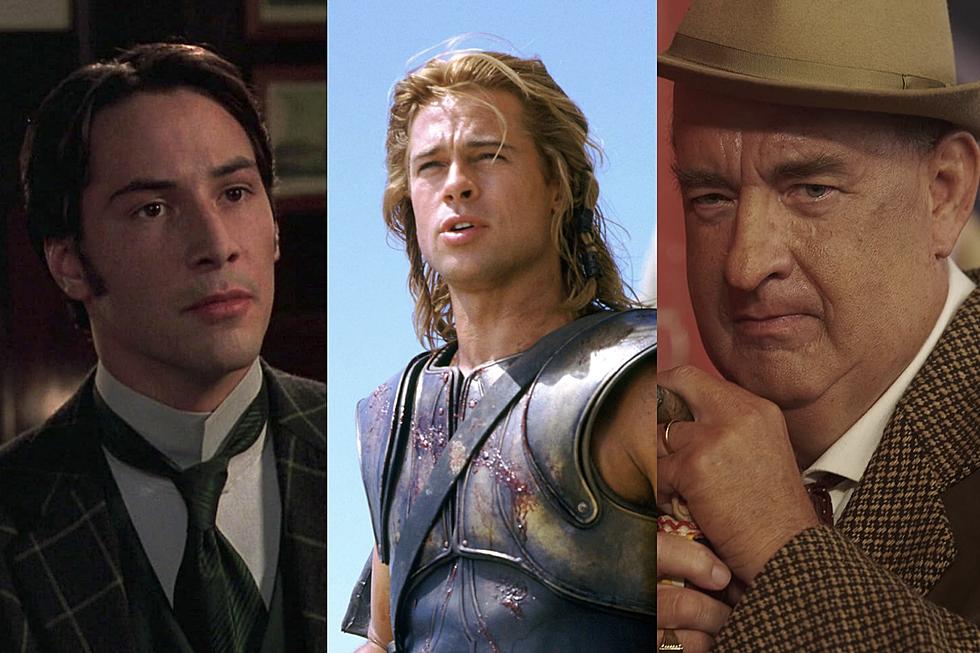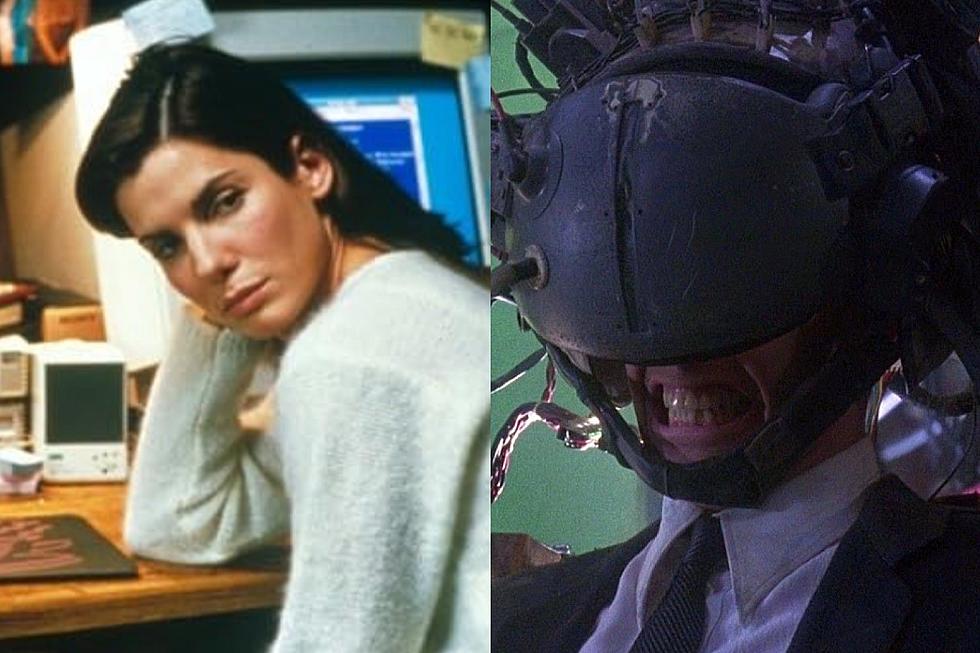
25 Years Ago, Keanu Reeves Had One of the Craziest Weeks in Movie History
This year marks the 25th anniversary of two very special Keanu Reeves films: Point Break and Bill & Ted’s Bogus Journey. But what makes this particular anniversary so significant is that these movies weren’t released within a few months of each other — they were released just seven days apart. It may very well have been the weirdest and most wonderful week in new movie release history, and one that hasn’t really been replicated since.
It’s not as if an actor releasing two films in the same week is unheard of: In 2016 alone we’ve seen comedian Hannibal Buress open three new films in the same weekend (Neighbors 2, The Nice Guys, and The Angry Birds Movie). In 2014, Jonah Hill starred in 22 Jump Street and How to Train Your Dragon 2, two sequels that hit theaters on the same day. And given his prolific nature, it’s not surprising that Samuel L. Jackson released two films (Iron Man 2 and Mother and Child) on the same weekend in 2010. (It’s actually more surprising that this has only happened to Jackson once.)
There are more examples, of course, but none of them are nearly as distinctive as the back-to-back release of Point Break and Bill & Ted’s Bogus Journey — a remarkably disparate pairing of films bound together by Reeves. Kathryn Bigelow’s classic action thriller cast the actor as FBI agent Johnny Utah, whose natural Cali boy vibe allows him to easily infiltrate a gang of surfers/bank robbers led by Patrick Swayze’s charismatic Bodhi. Point Break hit theaters on July 12, 1991 and opened at $8.5 million, putting it behind Terminator 2: Judgment Day, which held the top spot for the second week in a row. (That film was directed by Bigelow’s then-husband James Cameron, whose ambitious sci-fi epic Avatar lost Best Picture to Bigelow’s Hurt Locker at the Oscars in 2010.)
In a near-complete 180, Bill & Ted’s Bogus Journey hit theaters on July 19, 1991, with producers hoping to duplicate the success of 1989’s Excellent Adventure. Reeves reprised his role as Ted “Theodore” Logan opposite Alex Winter’s Bill S. Preston, Esq. in the sequel, which follows the most righteously aloof time-traveling high school duo on a new adventure in which they must defy death and defeat a pair of evil clones to save their girlfriends and secure the future of mankind. Bogus Journey couldn’t quite match the box office success of its predecessor — perhaps because pop culture had been over-saturated with Bill & Ted, which spawned an animated TV series, a full line of merchandise (including breakfast cereal), plans for a live-action TV show (which was horrible) and the 1991 film sequel.
Or maybe it was because Bogus Journey was so incredibly bizarre. The sequel introduces a future in which Bill and Ted’s band, Wyld Stallyns, have inspired a utopian society where everyone dresses like extras in a Luc Besson sci-fi epic. Then there’s Station, an enlightened alien creature that could be David Cronenberg’s reimagining of Snuffleupagus. But the one thing that perfectly sums up this wacky sequel is the wholly unexpected — and kind of amazing — homage to Ingrid Bergman’s The Seventh Seal; instead of playing Chess, Bill and Ted challenge Death to a series of games including Twister and Battleship.
Bogus Journey wasn’t very well-received with critics, either, but it did impress a few. Roger Ebert gave the film three out of four stars and praised it as “the kind of movie where you start out snickering in spite of yourself, and end up actually admiring the originality that went into creating this hallucinatory slapstick” — this, despite the fact that he still hadn’t seen Excellent Adventure.
In contrast to Bogus Journey’s 57 percent rating on Rotten Tomatoes, Point Break sits at 68 percent, though it certainly had its fair share of detractors (critic Owen Gleiberman weirdly railed against it for turning “reckless athletic valor into a new form of aristocracy”). Both of the films Reeves released in July 1991 have achieved cult status in their own right: Point Break became enough of a legitimate classic to merit a bland remake in 2015. Meanwhile, Reeves and Winter have been promising a third Bill & Ted movie for years.
The enduring popularity of Point Break and Bogus Journey (or at least of Bill & Ted) is only somewhat unremarkable given our primitive attachment to pop culture nostalgia, but perhaps we aren’t giving Reeves enough credit for releasing these films just seven days apart. It’s rare for a filmmaker to put two almost entirely different movies out in the same calendar year, and even more so for both of those films to become classics.
Perhaps the only comparable example is Steven Spielberg, who released Jurassic Park and Schindler’s List eight months apart, with his instantly iconic blockbuster hitting theaters in June 1993, followed by his Oscar-winning Holocaust drama in December that same year. No two films could be more dissimilar, and few are as universally acclaimed, and though Spielberg and Reeves are very different artists, the comparison feels apt. To give a more recent example, Tom McCarthy released the The Cobbler in March 2015, followed eight months later by Spotlight — a terrifically terrible Adam Sandler flick that was easily the worst of McCarthy’s career followed by his best, which went on to win Best Picture at the Oscars.
But imagine if Spielberg and McCarthy had released their respective pairs of films not just in the same year, but within one week of each other. It would be mind-blowing, and we’d still be talking about it a decade or so later. And yet somehow this isn’t the case with Point Break and Bogus Journey — maybe because the former is mostly considered good but not great, and the latter is a sequel often overlooked due to its rebelliously bizarre style. Maybe it’s because Reeves’ talents still aren’t appreciated nearly enough, despite the fact that — unlike many of his peers — he managed to survive the late ’80s and early ’90s and eventually found his niche.
The fact remains that Reeves achieved something that hasn’t been replicated since, starring in two films, both classics in their own right, that were released within one week of each other. It’s something that’s definitely worth celebrating 25 years later, and most certainly worthy of a Reeves-approved “whoa.”
More From ScreenCrush









